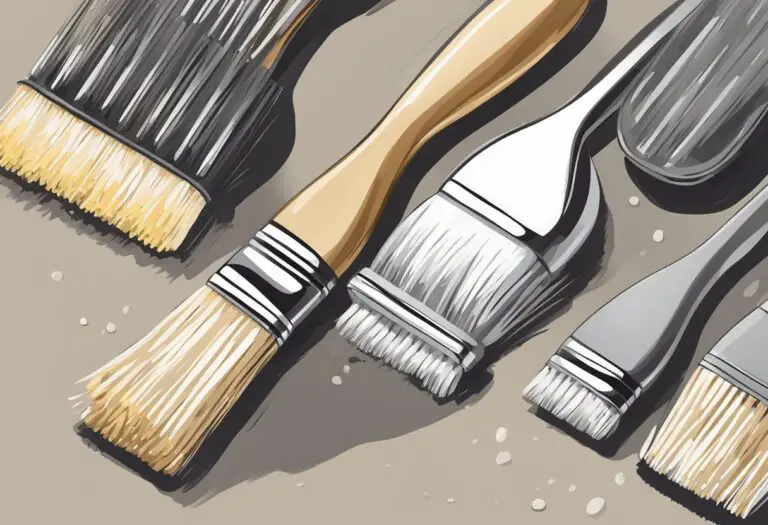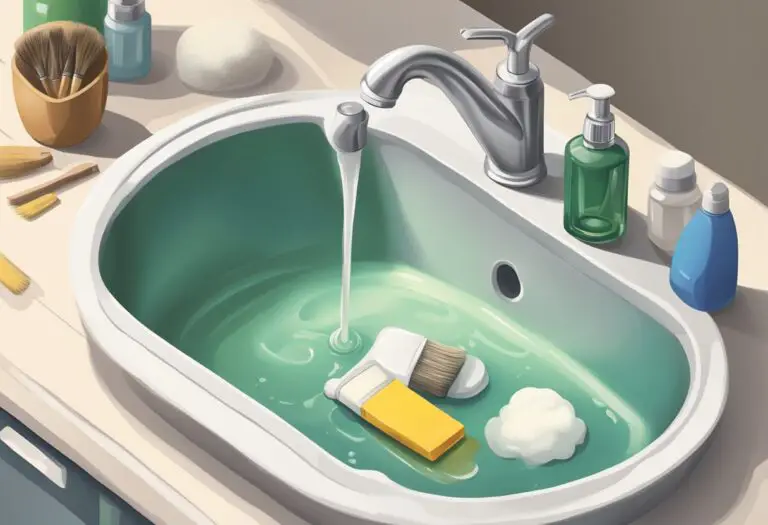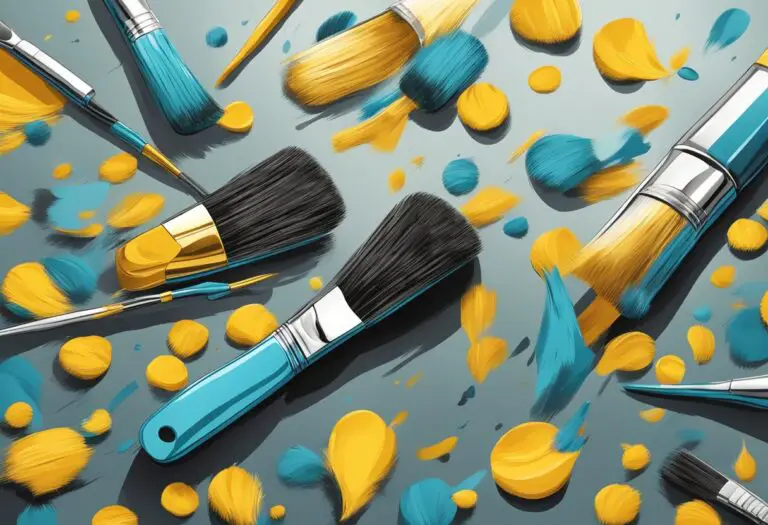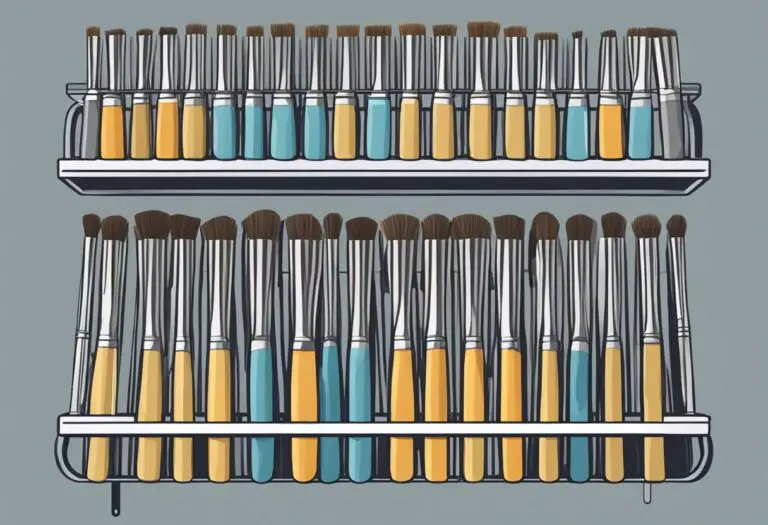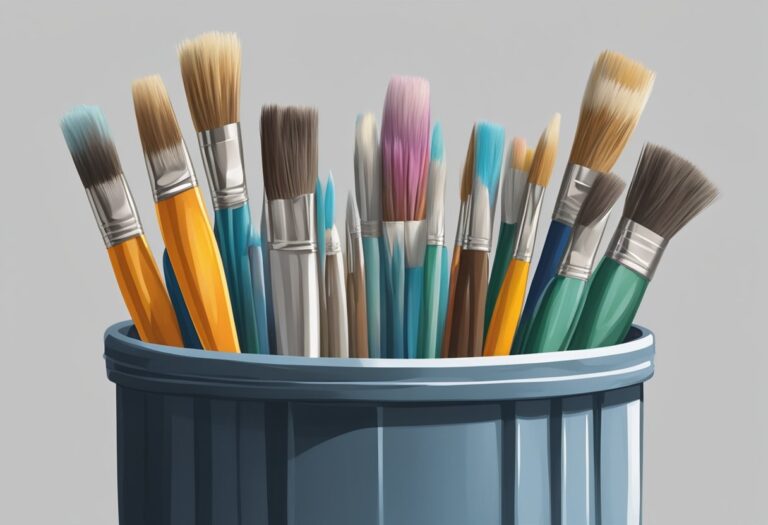How often should I replace my paintbrushes?
How Often Should I Replace My Paintbrushes: A Comprehensive Guide
Paintbrushes are an essential tool for any painter, whether professional or amateur. However, not all paintbrushes are made equally, and they can wear out over time. This raises the question: how often should you replace your paintbrushes?

The answer to this question depends on a variety of factors, such as the type of paintbrush, the frequency of use, and the type of paint being used. For example, synthetic brushes tend to last longer than natural hair brushes, and oil-based paints can be more damaging to brushes than water-based paints.
It’s important to keep an eye on the condition of your paintbrushes to ensure they are functioning properly and producing the desired results. In this article, we will explore the factors that affect the lifespan of paintbrushes and provide guidance on how often you should replace them to achieve optimal painting results.
Understanding Paintbrush Wear and Tear

Types of Paintbrushes
There are many different types of paintbrushes available, each designed for specific purposes. However, regardless of the type of brush, they all experience wear and tear over time. Synthetic brushes tend to last longer than natural hair brushes, but they can still deteriorate with use.
Signs of Deterioration
Knowing when to replace a paintbrush can be difficult, but there are some signs of wear and tear to look out for. The most obvious sign is when the bristles start to fray or become misshapen. This can cause the brush to lose its ability to hold paint, making it difficult to achieve a smooth finish.
Another sign of deterioration is when the bristles start to fall out. This can be a sign that the glue holding the bristles in place is starting to break down. If this happens, it’s time to replace the brush.
Finally, if a brush has been used for a long time, it may start to lose its stiffness. This can make it difficult to control the amount of paint on the brush, which can lead to drips and uneven coverage.
In general, it’s a good idea to replace paintbrushes every six months to a year, depending on how often they are used and how well they are cared for. Regular cleaning and proper storage can help extend the life of a paintbrush, but eventually, all brushes will need to be replaced.
Overall, understanding the signs of paintbrush wear and tear is important for achieving a high-quality finish. By keeping an eye out for these signs, painters can ensure that they are using the best tools for the job.
Maintenance and Care

Proper Cleaning Techniques
To ensure the longevity of paintbrushes, it is important to clean them properly after each use. First, remove excess paint by wiping the brush on a clean cloth or paper towel. Then, rinse the brush in warm water and use a mild soap or brush cleaner to remove any remaining paint. Be gentle when cleaning the bristles to avoid damaging them. Rinse the brush thoroughly and reshape the bristles before allowing it to dry completely.
For brushes used with oil-based paints, it is recommended to use a solvent such as mineral spirits or paint thinner to clean them. Follow the same steps as with water-based paints, but use the solvent instead of water. Be sure to dispose of the solvent properly and avoid using it near an open flame.
Storage Solutions
Proper storage of paintbrushes is also important for their longevity. After cleaning, allow the brush to dry completely before storing it. Store brushes bristle-side up or lying flat to avoid bending the bristles. Avoid storing brushes in airtight containers as this can cause the bristles to become moldy or damaged.
For long-term storage, consider wrapping the brush in a piece of paper or cloth to protect the bristles. Store the wrapped brush in a cool, dry place away from direct sunlight.
By following these proper cleaning and storage techniques, paintbrushes can last for many years and provide quality results for all painting projects.
Replacement Guidelines

When it comes to paintbrushes, it is important to replace them regularly to ensure optimal performance. Here are some guidelines to follow regarding when to replace your paintbrushes.
Frequency Based on Usage
The frequency at which you should replace your paintbrushes depends on how often you use them. If you are a professional painter and use your brushes on a daily basis, you should replace them every 6-12 months. If you are a casual painter and only use your brushes occasionally, they can last up to 2 years.
It is important to note that if you notice any damage or wear and tear on your brush, you should replace it immediately, regardless of how often you use it.
Quality vs. Cost
When it comes to replacing your paintbrushes, it is important to consider the quality of the brush versus the cost. While high-quality brushes may be more expensive, they will last longer and perform better than cheaper brushes. Cheaper brushes may need to be replaced more often, which can end up costing more in the long run.
It is recommended to invest in high-quality brushes and replace them as needed to ensure the best results. Additionally, properly caring for your brushes can also extend their lifespan and save you money in the long run.
By following these guidelines, you can ensure that your paintbrushes are always in top condition and ready for your next project.
Making the Decision to Replace
When it comes to paintbrushes, knowing when to replace them can be a tricky decision. There are several factors to consider, including the brush’s performance and cost-benefit analysis.
Performance Assessment
One of the most important factors to consider when deciding whether to replace a paintbrush is its performance. Over time, brushes can become worn down, lose their shape, and begin to shed bristles. This can result in a less than satisfactory painting experience, with uneven coverage and streaky lines.
To assess a brush’s performance, consider the following:
- Are the bristles still straight and intact?
- Is the brush holding its shape?
- Is the brush shedding bristles?
- Is the brush applying paint evenly?
If the answer to any of these questions is no, it may be time to replace the brush.
Cost-Benefit Analysis
Another factor to consider when deciding whether to replace a paintbrush is the cost-benefit analysis. While it may be tempting to hold onto a brush for as long as possible to save money, using a worn-down brush can actually end up costing more in the long run.
A brush that sheds bristles or applies paint unevenly can result in a need for more touch-ups and a longer painting time. Additionally, a brush that has lost its shape can make it difficult to achieve the desired effect.
When considering the cost-benefit analysis, ask yourself the following:
- How much time and effort will it take to achieve the desired effect with a worn-down brush?
- Will a new brush result in a better quality finish?
- How much will a new brush cost versus the cost of touch-ups and additional painting time?
By considering both the performance assessment and cost-benefit analysis, one can make an informed decision about when to replace a paintbrush.


